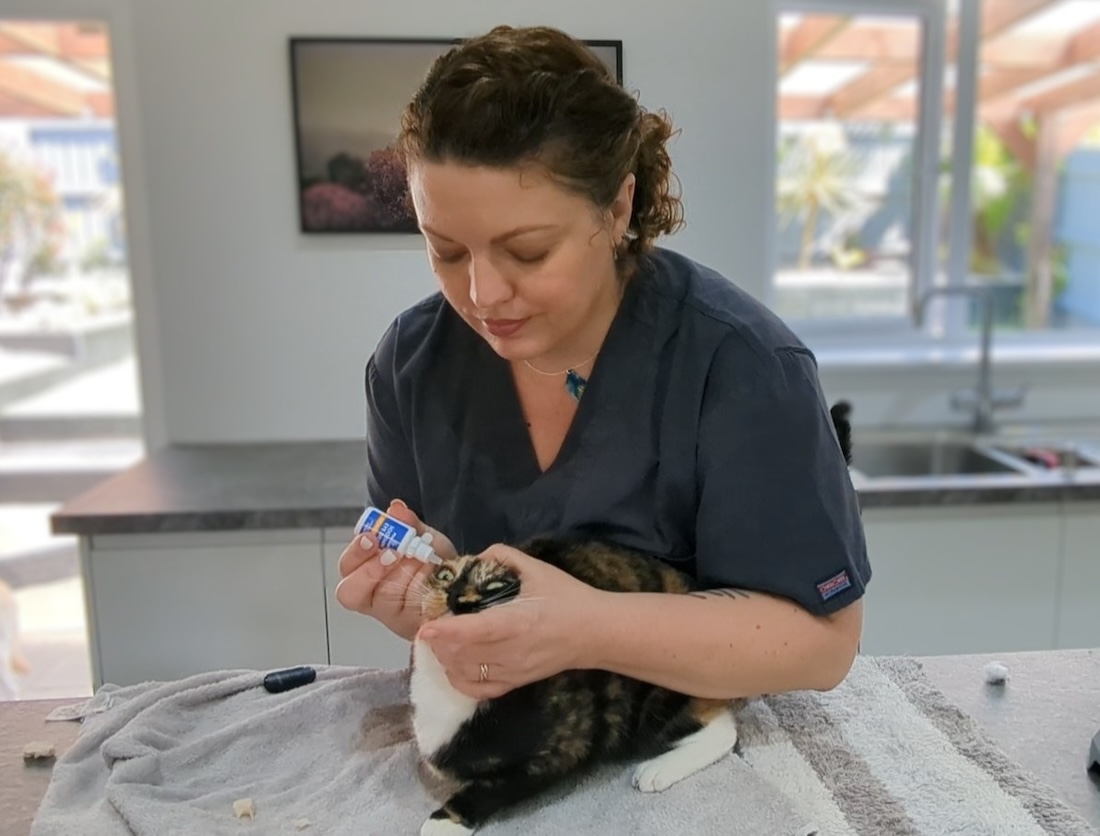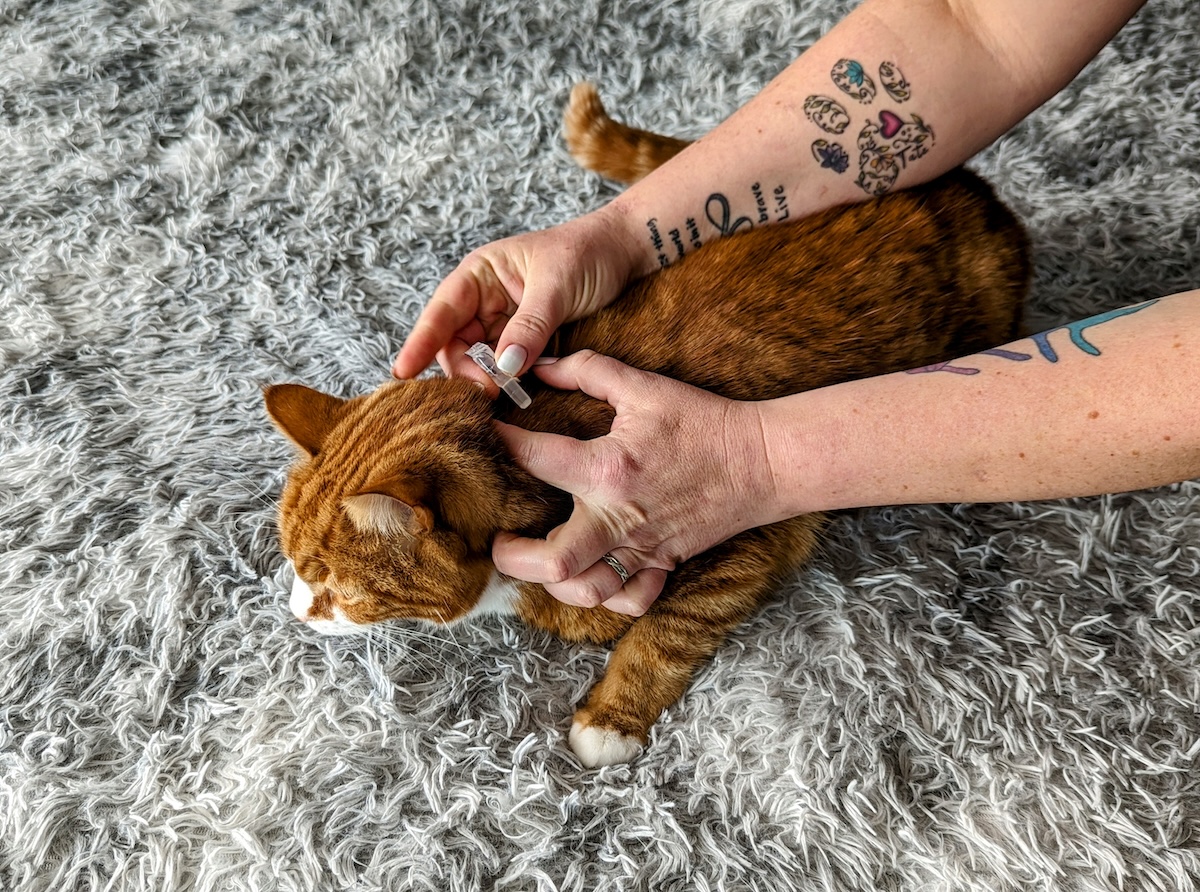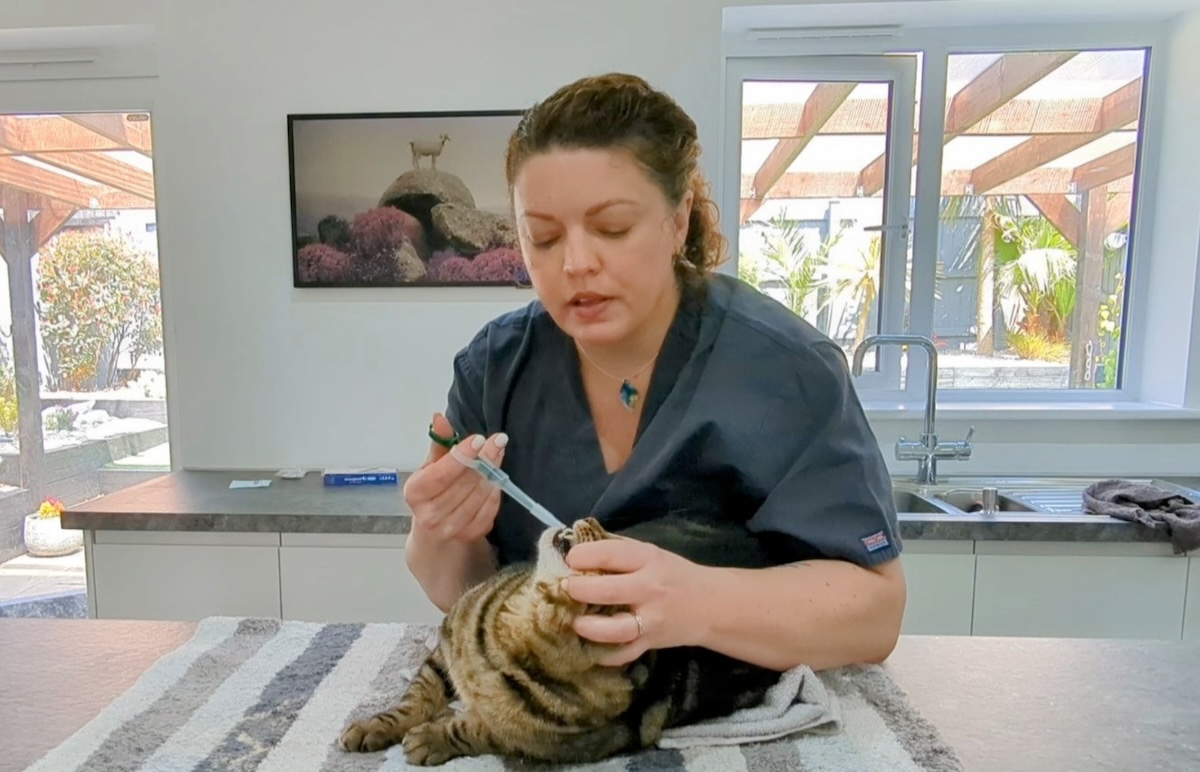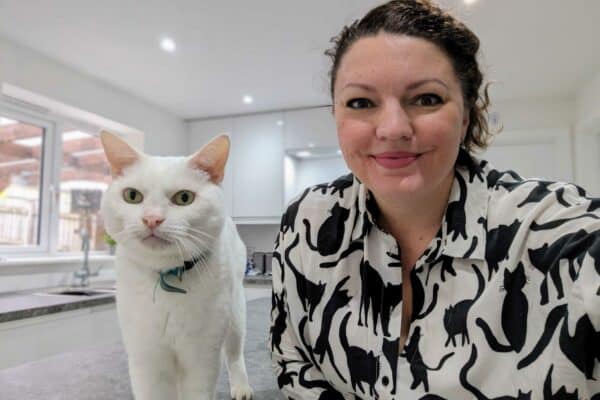Hi, I’m Dr. Karyn! Read my introduction to learn more about me and meet my five funny cats: Clutch, Cyril, Alex, Zelda, and Zazzles.
Whether it’s a worming tablet, flea treatment, or a course of antibiotics, trying to treat your cat isn’t always easy, and when I created this guide, I thought I’d have the perfect model in my cozy cat, Clutch . Boy, was I wrong! On the plus side, however, he gave us some great examples of how to deal with an uncooperative patient!
A few things I’ve learned about treating cats, both myself and my patients:
- Cut the nails first – even if they object, they do it with short nails!
- Make them comfortable and secure – choose a location where they are happy and place a towel or non-slip mat under them.
- Cats aren’t stupid – if medicine tastes bad, they won’t eat it in their food.
- 4 hands are better than 2 – if possible, get someone to help you.
- Confident handling is essential – see my previous post on How to Safely Restrain Your Cat for more tips and tricks.
Eye drops

The trick to giving the eye drops is to come from the back of the head instead of the front – it’s less confrontational for your cat. Use the heel of the hand holding the drops to pull the lower eyelid down while using the other hand to stabilize the back of the head.
Clutch really let the team down on this one! He, like many cats, is intolerant of eye drops. But, it gave me the opportunity to use the method I developed for my Chihuahua, Ned. I use a small amount of cotton wool and moisten it with eye drops, just enough to ensure that the drops drip into the eye as I wipe the cotton wool over the eyelids. The clutch may not like it either, but it allows you to get the eye drops in instead of trying to ‘point and shoot’. Just be aware that you will go through your eye drops faster with this method.
Spot-ons

Many people are too busy separating the fur and making sure they can see the skin before applying flea products. Yes, it is important that the product is applied to the skin, but as long as you insert the nozzle through the fur towards the skin, you can be sure that it reaches the right place. You will always get some liquid on the fur, so keep in mind that this stuff can leave permanent greasy marks on clothes, walls, and furniture!
Liquids and Pastes
Although I hate to use towel wraps on cats, Clutch once again proved to be the most difficult patient! Although her claws were covered, she was very good at pushing me away and squirming, so she became our towel-demo.
When giving liquids and pastes to your cat, you need to turn the head as far as you can, as this requires a lot of force from the lower jaw. You need to direct the syringe towards the back of the tongue, but do not shoot the liquid too quickly.
Tablets
*groan*
We all hate giving our cats pills. Even the ones that are said to be delicious, are rare. Here are my hot tips for giving tablets:
- If they taste bad, food probably won’t keep them, and crushing them on food will only deny them a larger amount of food.
- Hiding the drug in food will only work if the tablets are tasteless or not bitter.
- Gelatin capsules (vegan alternatives are available) are a great way to turn multiple tablets into a single medication, and come in a variety of sizes.
- Pill and pill putty dispensers are lifesavers!

If you need to get a pill down your cat’s throat, you need to put it on the back of the tongue. I can guarantee that anything short of that will result in a failure, even if you don’t realize it at the time. Touching their mouth or rubbing their throat just means that the pill to be spit out later is stickier.
Here’s the Real Tip
If you’re really having trouble treating your cat, talk to your veterinary practice. You’ll be surprised at how helpful they can be, from showing you different ways to get those medications in, finding alternative formulations, or even giving your cat the medication for you.
Don’t be shy – we’re here to help!
To see these tips in action – with Clutch making me look like a fool – check out the video.




